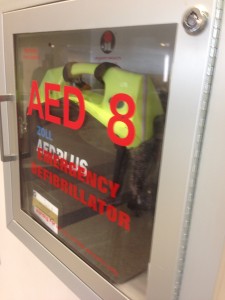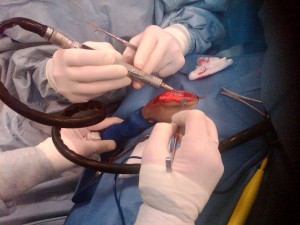
When you’re designing medical devices and tools, it’s important to choose materials that can be easily cleaned and sterilized for use without breaking down. Platinum-cured liquid silicone rubber (LSR) is a material that can be used in healthcare products. It’s durable and can be disinfected in a few different ways. At SiTECH, we use platinum-cured LSR in the manufacturing process, using it to make many different medical liquid injection molding products.
Why Sterilize?
For many medical devices, it’s important to remove any bacteria from the surface after they’ve come in contact with the body or bodily fluids. It’s also important to keep routine machine and device parts clean and free from dust on a regular basis. While medical rubber molding doesn’t support bacterial growth, other materials used in fabrication of technical devices and machines can be excellent breeding grounds. The whole device can be sterilized at the same time without taking it apart when the platinum-cured LSR components can go through the process. Studies show that platinum-cured rubber molding can withstand several different types of sterilization processes on a routine basis as necessary.

Uses for Medical LSR Molding
In hospitals, doctor’s offices, laboratories, and emergency and urgent care facilities, healthcare professionals rely on a wide range of machines, devices and tools to care for patients every day.
• Silicone rubber anti-slip handles on medical instruments
• Emergency defibrillator cases and kits
• Gaskets, plugs and covers
• Device control keypads
• Rubber tubing
Why LSR Molding?
Medical products are used in a variety of environments, from extremely high and low temperatures to high-speed movements to precise applications. Some components simply provide a barrier or covering to protect other parts. Small and thin parts are used as gaskets or hole plugs. Medical silicone injected components are more suitable than most thermoplastics in a variety of healthcare environments. When creating designs for medical products, some of the properties available with medical liquid injection molding include:
• Flexibility
• Heat resistance
• Can be sterilized
• Durable even in small and thin parts
• High-volume manufacture with precise replication
Sterilizing Options
Knowing which sterilization options are applicable to device components is a critical factor in planning product design. If a device needs to be sterilized so that it can be used in a medical environment or on a patient, the components need to be able to withstand the procedures without breaking down or compromising their capabilities.
• Alcohol – One of the easiest methods to sterilize medical LSR components is by simply swabbing them with rubbing alcohol. This kills bacteria and removes dust or particles without compromising the silicone rubber.
• Autoclave – Using a steam-based process, called an autoclave machine, is an alternative method of sterilizing platinum-cured LSR. The Centers for Disease Control and Prevention (CDC) recommends autoclave sterilization for a variety of materials and devices to destroy microorganisms. These include surgical instruments, medical implants and biopsy forceps.
• Gamma Radiation – Gamma radiation exposure is another common form of sterilization. In general terms, exposure to gamma rays can have an effect on certain types of rubber, causing it to become less elastic and take on a higher, denser molecular weight. The effects to platinum-cured LSR molding are minimal when compared to platinum-cured high-consistency rubber (HCR) and peroxide-cured HCR. The peroxide-cured rubber was most affected. Testing shows that, depending on the type of product or component created and how it’s used, any amount of density or elasticity change may not be an issue.
• Dry Heat – Using dry heat to kill certain types of bacteria is another option. LSR components from SiTECH, for example, can be used in operating temperatures between -45 degrees F and 450 degrees F without affecting the product’s capabilities.
When designing medical components, it’s important to consider if or how a device or machine can be cleaned or sterilized. When choosing rubber molding, be sure to differentiate between platinum-cured liquid silicone rubber and other materials. The higher quality of platinum-cured LSR can make a difference in the outcome of your product and its ability to be sterilized.
For more information about the technical details surrounding silicone rubber molding, visit the Technical Facts page on our website.








